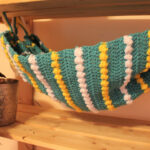The Camouflaging Autistic Traits Questionnaire (CAT-Q or Cat-Q) is a self-assessment tool designed to measure social camouflaging behaviors in adults. This questionnaire is particularly useful in identifying individuals who may be autistic but do not meet standard diagnostic criteria due to their ability to mask their autistic traits. If you are exploring “Cat Q” and its relevance to understanding autism, this guide will provide comprehensive information about the CAT-Q.
What is the Purpose of the CAT-Q?
The primary function of the CAT-Q is to evaluate the extent to which an individual employs camouflaging strategies. Higher scores on the CAT-Q suggest a greater tendency to camouflage, which can lead to lower scores on other autism spectrum tests. Therefore, if you suspect you have autistic traits but haven’t received a diagnosis, exploring your “cat q” score might offer valuable insights.
The CAT-Q assesses camouflaging across three specific subcategories:
- Compensation: This subscale measures active strategies used to compensate for difficulties in social situations.
- Masking: This focuses on strategies employed to conceal autistic characteristics or present a neurotypical persona. Examples include consciously adjusting facial expressions and body language to appear confident, or forcing oneself to make eye contact.
- Assimilation: This subscale examines strategies used to fit in with others during social interactions. Examples here include mimicking others’ behaviors or avoiding social interactions altogether to blend in.
Who Should Consider Taking the CAT-Q (Cat-Q)?
The CAT-Q is designed for adults who are interested in understanding their social behaviors, particularly in the context of autism. It is especially relevant for individuals who:
- Suspect they might be autistic but haven’t received a formal diagnosis.
- Score low on other autism assessments but still identify with autistic traits.
- Are interested in learning more about social camouflaging and masking.
How to Take the CAT-Q (Cat-Q)
The CAT-Q is composed of 25 statements related to social interactions and behaviors. For each statement, you will have 7 response options, ranging from “Strongly Disagree” to “Strongly Agree”:
- Strongly Disagree
- Disagree
- Somewhat Disagree
- Neither Agree Nor Disagree
- Somewhat Agree
- Agree
- Strongly Agree
These 25 statements are divided across the three subcategories of camouflaging:
- 9 statements for Compensation
- 8 statements for Masking
- 8 statements for Assimilation
Understanding Your CAT-Q (Cat-Q) Score
The scoring range for the CAT-Q is from 25 to 175. A threshold score of 100 or higher indicates a significant level of camouflaging. Each item is scored from 1 to 7, with higher scores indicating greater camouflaging tendencies.
For a deeper understanding of your CAT-Q results and how they relate to autism and camouflaging, you can explore resources that provide detailed interpretations of CAT-Q scores. This can help you contextualize your “cat q” score and understand its implications.
Validity and Expert Insights on the CAT-Q
The CAT-Q is a valuable tool because it addresses limitations found in older autism diagnostic criteria. It is particularly effective at identifying autistic individuals who might score below diagnostic thresholds on other tests due to their masking abilities.
Dr. Natalie Engelbrecht, for example, scored 143 on the CAT-Q, significantly higher than the average for autistic females. This aligns with her personal experience of camouflaging extensively, which resulted in a late autism diagnosis at age 47. Her subscale scores were:
- Compensation: 49 (higher than the average of 42 for autistic females)
- Masking: 52 (higher than the average of 38 for autistic females)
- Assimilation: 45 (average for autistic females)
Kendall, another individual who took the CAT-Q, scored 131 overall, revealing a higher degree of camouflaging than they initially realized. Martin, reflecting on the test, noted the repetition of similar statements, which he found helpful for individuals with alexithymia to explore their feelings and behaviors. His scores ranged from 121 to 125 across multiple attempts, indicating consistent results.
Conclusion: Is the CAT-Q (Cat-Q) Right for You?
If you are curious about social camouflaging and its potential role in your experiences, the CAT-Q (Cat-Q) offers a valuable self-assessment. It can be a crucial step in understanding why you might identify with autistic traits even if other assessments have not indicated autism. By exploring your “cat q” score, you can gain deeper insights into your social behaviors and tendencies to camouflage.
Take the CAT-Q test to further explore your camouflaging traits and understand yourself better.
CAT-Q


